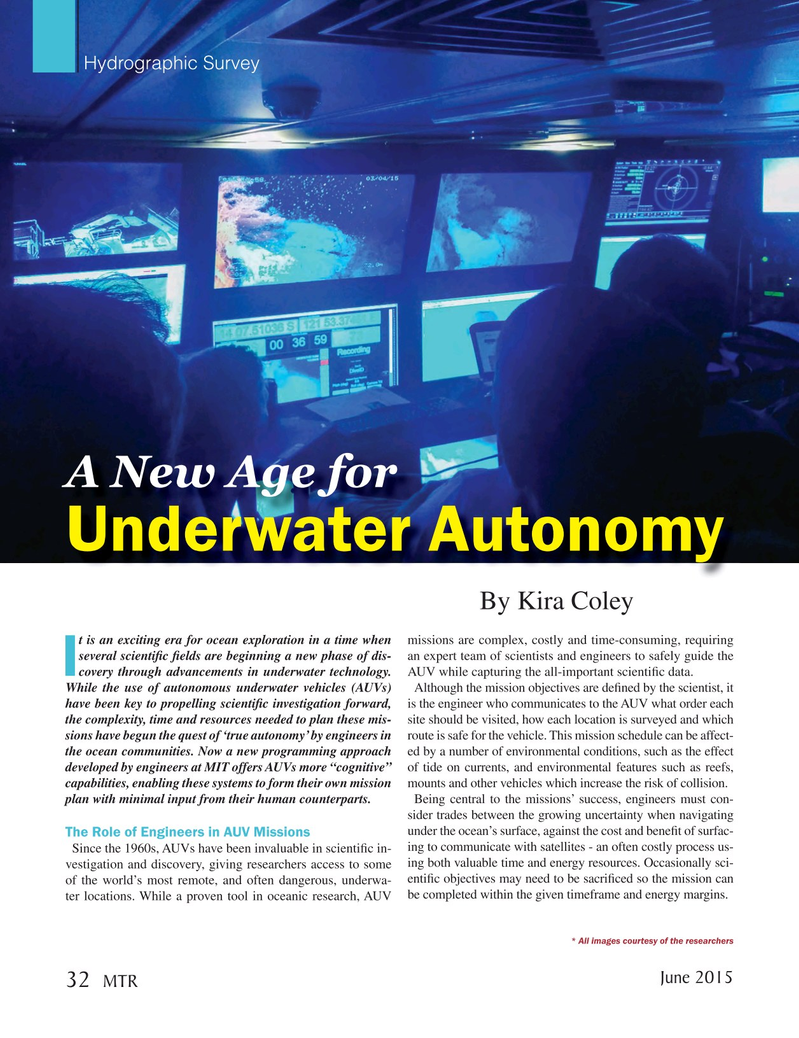
Page 32: of Marine Technology Magazine (June 2015)
Hydrographic Survey
Read this page in Pdf, Flash or Html5 edition of June 2015 Marine Technology Magazine
Hydrographic Survey
A New Age for
Underwater Autonomy
By Kira Coley t is an exciting era for ocean exploration in a time when missions are complex, costly and time-consuming, requiring several scienti? c ? elds are beginning a new phase of dis- an expert team of scientists and engineers to safely guide the
Icovery through advancements in underwater technology. AUV while capturing the all-important scienti? c data.
While the use of autonomous underwater vehicles (AUVs) Although the mission objectives are de? ned by the scientist, it have been key to propelling scienti? c investigation forward, is the engineer who communicates to the AUV what order each the complexity, time and resources needed to plan these mis- site should be visited, how each location is surveyed and which sions have begun the quest of ‘true autonomy’ by engineers in route is safe for the vehicle. This mission schedule can be affect- the ocean communities. Now a new programming approach ed by a number of environmental conditions, such as the effect developed by engineers at MIT offers AUVs more “cognitive” of tide on currents, and environmental features such as reefs, capabilities, enabling these systems to form their own mission mounts and other vehicles which increase the risk of collision. plan with minimal input from their human counterparts. Being central to the missions’ success, engineers must con- sider trades between the growing uncertainty when navigating under the ocean’s surface, against the cost and bene? t of surfac-
The Role of Engineers in AUV Missions ing to communicate with satellites - an often costly process us-
Since the 1960s, AUVs have been invaluable in scienti? c in- vestigation and discovery, giving researchers access to some ing both valuable time and energy resources. Occasionally sci- enti? c objectives may need to be sacri? ced so the mission can of the world’s most remote, and often dangerous, underwa- ter locations. While a proven tool in oceanic research, AUV be completed within the given timeframe and energy margins. * All images courtesy of the researchers
June 2015 32 MTR
MTR #5 (18-33).indd 32 MTR #5 (18-33).indd 32 6/11/2015 10:01:53 AM6/11/2015 10:01:53 AM

 31
31

 33
33
